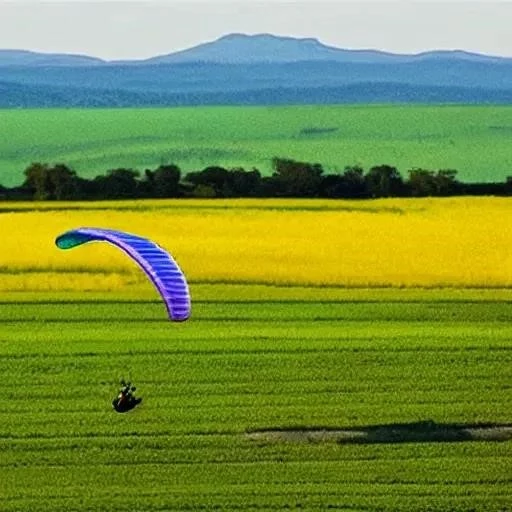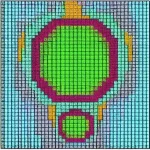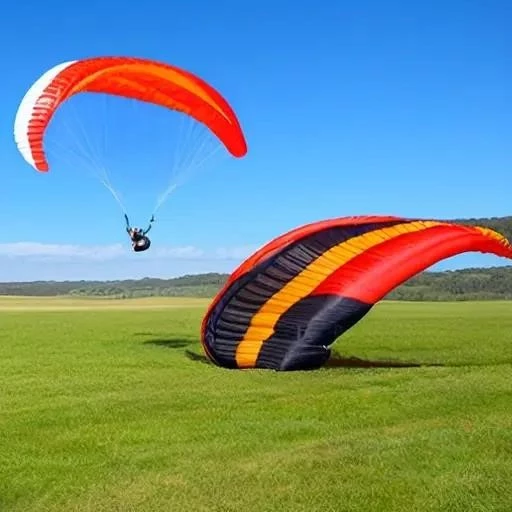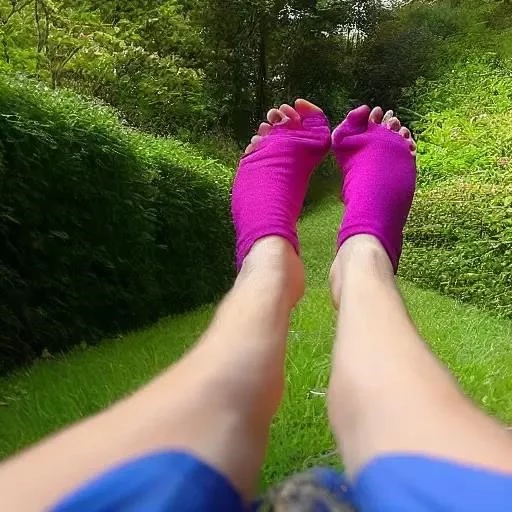The allure of flight‚ a dream as ancient as humanity itself‚ has captivated minds for millennia․ Imagine gliding silently above breathtaking landscapes‚ the world unfolding beneath you like a meticulously crafted tapestry‚ an unparalleled sense of freedom coursing through your veins․ This isn’t merely a fantasy; it’s the profound reality of paragliding‚ a sport that has democratized the skies‚ making the dream of soaring accessible to a surprisingly wide audience․ Often perceived as an extreme and prohibitively expensive endeavor‚ the truth is far more nuanced and remarkably encouraging‚ inviting enthusiasts to embark on their aerial journey with confidence and informed choices․
As we stand on the cusp of an exhilarating new era for adventure sports‚ paragliding continues to evolve‚ offering an increasingly diverse range of equipment and training pathways․ From serene cross-country flights to dynamic acrobatic displays‚ the possibilities are as boundless as the open sky․ But for many aspiring pilots‚ a fundamental question often arises‚ perhaps whispered or overtly asked: How․Kuch does one actually enter this captivating world? Beyond the sheer thrill‚ understanding the practicalities – particularly the investment in gear‚ training‚ and ongoing maintenance – is paramount․ This exploration will meticulously dissect the financial landscape and equipment considerations‚ illuminating the path for anyone dreaming of their first flight․
| Category | Description | Estimated New Cost Range (USD) | Reference Link |
|---|---|---|---|
| Paraglider Wing (Beginner) | Main component for flight‚ A-rated for stability․ | $2‚000 ⸺ $4‚500 | airdamien․com |
| Paraglider Wing (Advanced/Competition) | High-performance models for experienced pilots․ | $4‚300 ⸺ $9‚000+ | airdamien․com |
| Harness | Connects pilot to wing‚ provides support and comfort․ | $800 ⸺ $1‚000 | airdamien․com |
| Reserve Parachute | Essential safety equipment for emergencies․ | Included in overall gear cost‚ typically ~4 lbs․ | airdamien․com |
| Instruments (GPS‚ Radio‚ Variometer) | Navigation‚ communication‚ altitude/descent rate․ | $100 ⎼ $800+ (for full flight deck) | airdamien․com |
| Training Course | Essential instruction for safe flying․ | $1‚000 ⎼ $3‚500 | airdamien․com |
| Estimated Total Basic Setup | Wing‚ harness‚ reserve‚ basic instruments‚ training․ | $4‚500 ⎼ $7‚500 | airdamien․com |
Navigating the Investment: Deconstructing Paragliding Costs
The initial outlay for a complete paragliding setup‚ though significant‚ is often compared favorably to other adventurous pursuits‚ such as owning a motorcycle․ A brand-new‚ entry-level paraglider wing‚ meticulously designed for stability and ease of launch‚ typically ranges from $2‚500 to $4‚500․ Advanced or competition models‚ offering superior performance and glide ratios‚ can ascend beyond $9‚000․ This primary piece of equipment‚ the wing itself‚ is just one component of a comprehensive flying system‚ each element playing a crucial role in safety and enjoyment․
Beyond the wing‚ a high-quality harness‚ connecting the pilot to their canopy with robust security and ergonomic comfort‚ will set you back approximately $800 to $1‚000․ Essential safety gear‚ including a reserve parachute and a brake system‚ are non-negotiable additions‚ ensuring peace of mind during every flight․ Furthermore‚ modern paragliding is significantly enhanced by an array of instruments: a GPS for precise navigation‚ a radio for vital communication with fellow pilots and ground control‚ and a variometer to measure altitude and vertical speed․ These indispensable tools can add another $100 to $800‚ depending on the sophistication of the flight deck system chosen․ Importantly‚ the most valuable investment‚ often overlooked in equipment tallies‚ is professional training․ A comprehensive course‚ typically costing between $1‚000 and $3‚500‚ provides the foundational skills and safety protocols essential for becoming a competent and confident pilot․
Weight‚ Wings‚ and the Art of Gear Selection
One of the most critical‚ yet frequently underestimated‚ aspects of paragliding is the interplay between pilot weight and wing size․ Every paraglider wing is certified for a specific weight range‚ encompassing the pilot’s body weight alongside all their gear‚ clothing‚ and accessories – truly‚ everything․ For instance‚ a common XL-sized wing from a reputable manufacturer like Ozone might have a maximum certified weight of 130kg (286lbs)․ However‚ with typical gear weighing around 18kg (40lbs)‚ a pilot weighing 120kg (265lbs) would actually exceed this limit‚ necessitating a lighter setup or a larger wing․ Brands like Niviuk offer wings up to 135kg‚ while Phi Viola’s XL size extends to a generous 145kg‚ broadening options for larger pilots․
For individuals seeking to minimize their total flying weight‚ lightweight gear presents an appealing solution‚ potentially reducing overall equipment weight from an average of 20kg (45lbs) to as little as 11kg (25lbs)․ However‚ this reduction often comes with trade-offs; lightweight wings‚ while offering enhanced agility‚ may not endure the rigors of frequent use by a larger pilot as effectively as their standard counterparts․ Expert opinions consistently emphasize prioritizing durability and passive safety‚ especially for beginners․ Alternatively‚ tandem wings‚ primarily designed for two people‚ offer significantly higher weight capacities (topping out around 180kg)‚ though they utilize trimmers instead of speed bars‚ requiring specialized instruction․ By meticulously assessing personal weight‚ gear requirements‚ and desired flying characteristics‚ aspiring pilots can make informed choices‚ optimizing their safety and enjoyment․
Beyond the Basics: Types of Wings and the Lifelong Journey
The paragliding market offers a fascinating array of wing types‚ each meticulously engineered for distinct purposes and skill levels․ For beginners‚ A-rated gliders are the gold standard‚ renowned for their inherent stability and forgiving nature‚ making the learning process smoother and safer․ Standard paragliders‚ providing excellent stability and glide performance‚ suit beginner to intermediate pilots․ Mini wings‚ smaller and lighter‚ offer increased maneuverability for advanced pilots engaged in dynamic activities like dune soaring․ Speed wings‚ as their name suggests‚ cater to experienced pilots craving high velocity and aerobatic capabilities‚ albeit with reduced stability․ Competition wings represent the pinnacle of performance‚ offering superior glide ratios and agility for elite pilots‚ though they demand advanced handling skills․
The choice of wing profoundly impacts flight characteristics‚ from speed and range to overall stability․ Larger wings generally provide more lift and a greater range‚ while reflex gliders are celebrated for their enhanced stability in turbulent air․ Materials like ripstop nylon and polyester‚ combined with aerodynamic designs‚ contribute to a wing’s performance envelope․ Consulting with seasoned instructors and experienced dealers is incredibly effective in navigating these choices‚ ensuring that your equipment aligns perfectly with your skill level‚ aspirations‚ and physical attributes․ Ultimately‚ paragliding transcends a mere hobby; it is a profoundly transformative lifelong sport‚ where the initial investment pays dividends in unparalleled experiences and a unique connection to the natural world․ The sky‚ waiting patiently‚ truly invites you to discover your wings․






